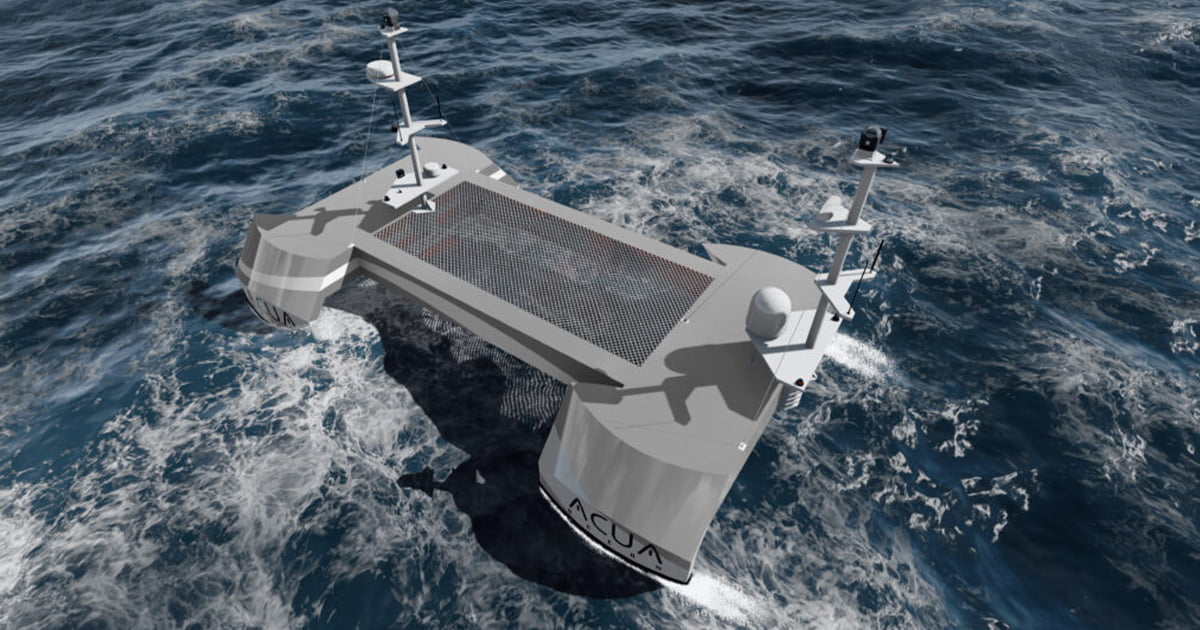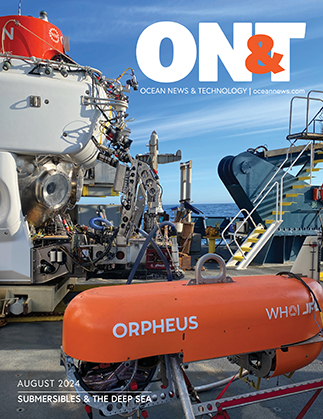However, a movement of this scale relies on more than a shared appetite among operators to trial and adopt new autonomous hardware and software—it hinges on the steadfast commercial collaboration needed to bring such packages to market.
ACUA Ocean, an ocean monitoring and protection innovator and uncrewed vehicle specialist, recently signed a commercial contract to integrate maritime leader Robosys Automation’s ground-breaking Voyager Artificial Intelligence (AI) vessel control systems with its unique ACUA hydrogen-powered uncrewed surface vessels (H-USV).
The contract marks ACUA Ocean’s ongoing commitment to further develop its range of innovative long endurance hydrogen-fueled uncrewed surface vessels (USV) for open ocean monitoring and data collection, across the security, offshore energy, and marine conservation sectors.
SEAMLESS FIT
Partnering with Robosys Automation, ACUA plans to undertake a phased approach of integrating the Voyager AI vessel control software with its hybrid electric and hydrogen propulsion systems. Robosys’ Voyager AI is regarded as a world-leading maritime AI software, which delivers autonomous navigation and remote control for USV’s control systems at various levels of autonomy with integrated collision, obstacle, and grounding avoidance; advanced situational awareness and decision aid support; and loss of communications (LOC) functionality for safe return to base.
ACUA’s highly seaworthy offshore H-USV will deliver up to 40 days of endurance, meaning increased operational time on site and data collection through its novel modular sensor payload system. The integration of Robosys’ solutions will provide navigational, platform controls, and supported decision aids, to deliver precise USV monitoring and protection to oceanic operations.
TESTING CAPABILITIES
ACUA Ocean has deployed its first mobile Remote Operations Center situated at its Plymouth, UK headquarters, with vessel Harbor and Sea Acceptance Testing commencing in Q2 2024. This will rigorously evaluate its Small Waterplane Area Twin Hull (SWATH) design for seakeeping and maneuverability, as well as its unique hydrogen-electric hybrid powertrain and command, control, and communications systems.
ACUA Ocean’s H-USVs are powered by RAD Propulsion’s drive-by-wire 40 kW electric twin drives allowing clean and efficient control by third party systems such as Robosys. RAD’s drives provide exceptional control and maneuverability.
Talking exclusively to ON&T, Nigel Lee, Chief Sales Officer of Robosys Automation, which is headquartered at the National Oceanography Centre in Southampton, UK, said: “Combining the unique features of ACUA’s H-USV with Robosys’ Voyager AI solutions will result in ACUA Ocean’s pioneering H-USV continuing to be the most innovative uncrewed surface vessel available in the market, both now and in the foreseeable future.”
Through the partnership with Robosys, the H-USVs will operate to Workboat Code Edition 3, Annex 2, ROUV. Additionally, as part of the agreement, the companies will further collaborate in workshops with the Maritime Coastguard Agency and Lloyd’s Register, aiming to obtain UK Flag and vessel class society certification of the ACUA H-USV with Robosys Voyager AI software.
This feature originally appeared in ON&T’s March 2024 issue. Click here to read more.

